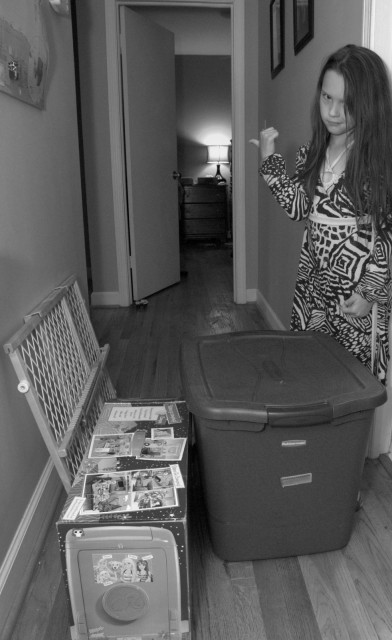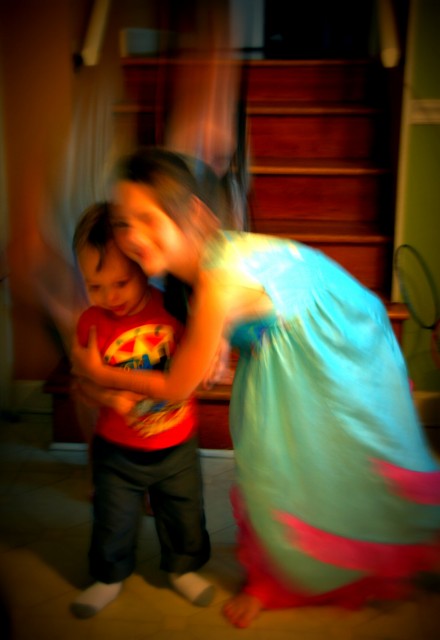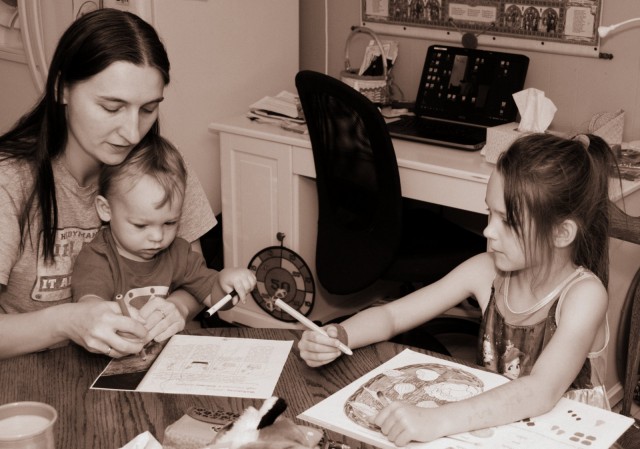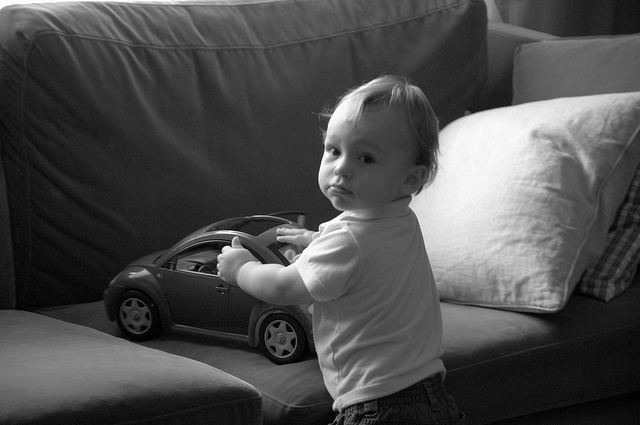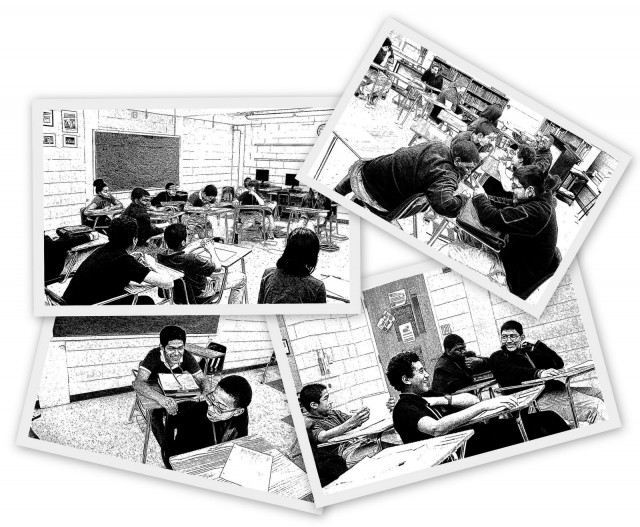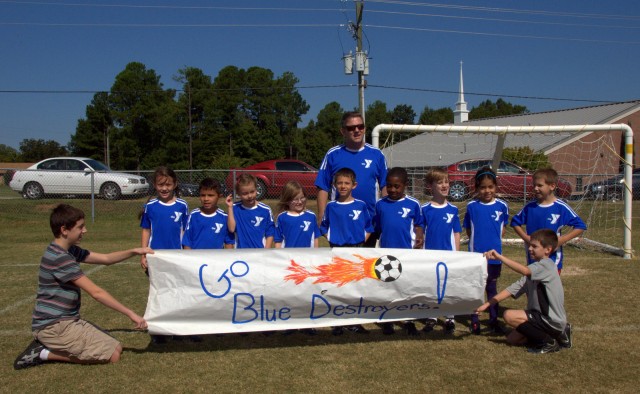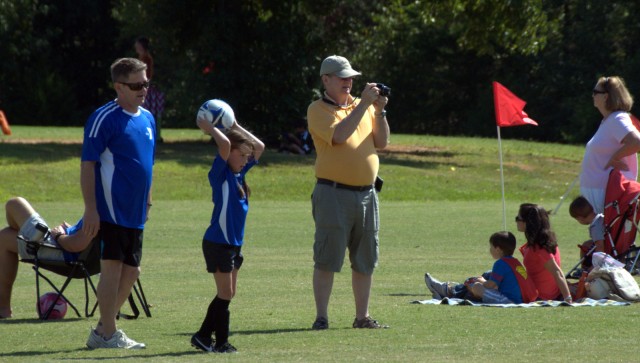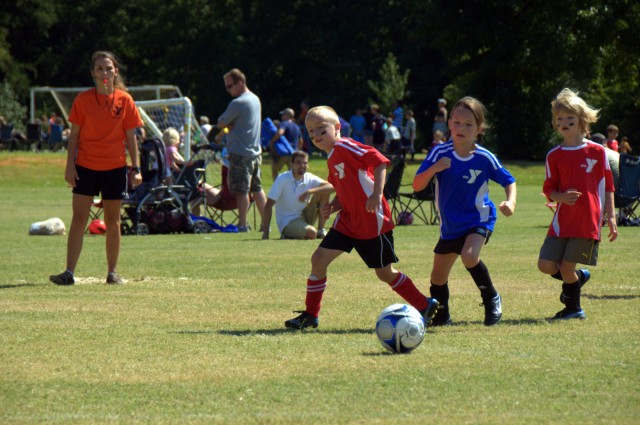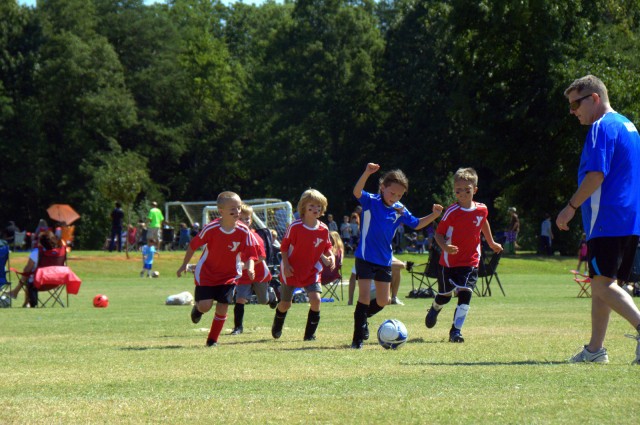I’ve only now been getting around to the videos from Poland.
Clearing Out
“I’ve outgrown them,” L explained as she packed up her Barbie odds and ends — including her beloved Barbie Camper — to be taken down to the basement for storage until an eventual yard sale or something similar.
But the Boy is into vehicles, and he spotted the camper, and he took it out of the box for a spin.
Saturday
Saturday is usually a day of hustle and bustle in our house, a day of constant movement and seemingly unending motion.
Yard work, repairs, cleaning, cooking, child care, soccer games, shopping — it makes the day pass in a flash. And I never really notice just how busy we usually are until we aren’t. With both kids a bit sick, today became a stay-at-home day.
And except for some cleaning and a bit of cooking, with some grading squeezed in here and there (40 out of 50 complete) and the Girl’s Polish schooling, it was an uneventful day.
It’s hardly something to complain about, though. Nothing on occasion is just fine.
Transformations
Forty years before this version was recorded, Led Zepplin was the epitome of hard rock bands. Drugs, women, private jets, utterly destroyed hotel rooms: they made the mold of 1970s rock star. With the death of drummer John Bonham in 1980, becoming so inebriated he choked to death on his own vomit in the middle of the night, the band collapsed.
And around thirty years after that, Plant teamed up with Alison Krauss, the greatest voice in bluegrass today (or any other genre), and among other things, resurrected some Zepplin classics, completely re-imagining them. Both the songs and the man, transformed.
Silly Story
A bug named Rose lived in a hut made of Roses. Rose is a good bug. Rose has a tub full of mud. Rose likes to play in the mud. Rose is awesome.
A story by the Girl.
Riu Riu Chiu
Playing Solo
Cemetery of Memories
The first time I approached the cemetery in Lipnica Wielka, it was November of 1996, and I headed up for my first experience with All Saints’ Day in Poland.

I took pictures and made mental notes for my journal:
I left my apartment around 4:30 and headed up to the cemetery to witness my first All Saints’ Day in Poland. I weaved my way through the maze of mud puddles that serve as my front yard and made it to the road, and suddenly it was if I was in Kraków instead of Lipnica. The street was filled with people, all leaving the cemetery as I made my way to the cemetery. I felt like the one Israelite who might have decided to turn back in the middle of the exodus. With my camera in hand and a bewildered look plastered across my face, I surely looked like a fool. But I didn’t care, for I was about to experience something I had heard about since arriving in Poland. (November 1996)
It was the first of many visits, for I found myself strangely drawn to the cemetery as the sun set. Summer sunsets were the best, giving Babia Gora just a touch of golden haze, but any sunset cast a lovely light over the headstones.
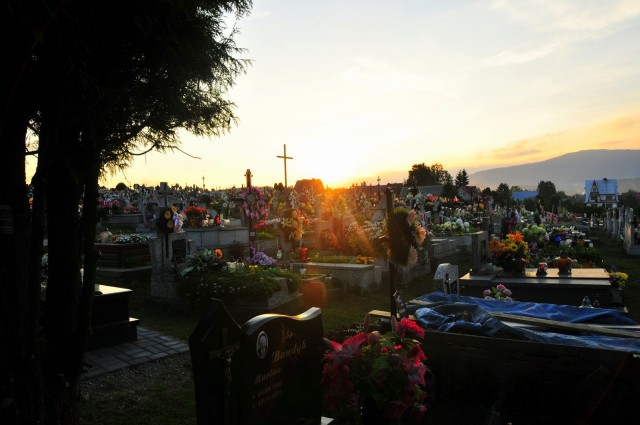
From the cemetery’s small hill, I could see all of the central area of Lipnica Wielka — centrum as it’s known — and that somehow gave me a sense of peace and belonging that other views lacked. Indeed, it was odd for me that from the first time I ever attended the cemetery prayers and processions of All Saints’ Day, this plot of land filled with the remains of total strangers became a place of peaceful retreat. I never imagined I’d really have a personal connection to it. After all, I taught high school, and most of my interactions were with students: how often do high school students die? All the teachers at the school were young: what were the chances of some random accident taking one of them? No, I never really thought that I would think of Lipnica’s cemetery as much more than a quiet place of reflection.
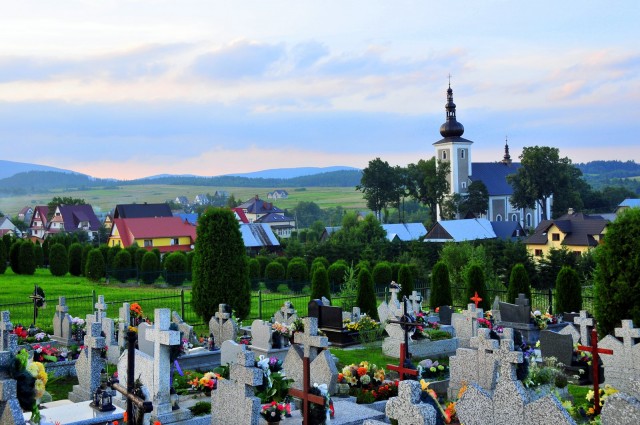
Yet that was just what happened. Disease, accident, and tragedy claimed several students’ lives during my time there.
The first was a girl named Halina. She wasn’t actually from Lipnica, but she was living at a rehabilitation center at the top of the village, just below Babia Gora. It was a center the Duchess of York had established for children recovering from the barrage of chemicals and radiation used to treat cancer. Halina was eighteen but trying to complete her first year of high school in Lipnica. Just before Christmas break, Halina disappeared. Several weeks later, during the two-week inter-semester winter break, I ran into the director of the rehab center.
“Halina died,” he said abruptly.
As she was from the west of Poland, several hours’ travel from Lipnica, I was unable to attend the funeral, and I’ve never visited her grave.

The cemetery was one of the last places I managed to visit during our 2013 trip, though. Â I’d come to pay respects to those students who’d died after the shock of Halina’s passing.
It took me little while, though, to realize how much had changed. The last remaining tree in the cemetery (a large evergreen) had been chopped down — a negative change. It always amazed me how the light of thousands of candles could illuminate the entire tree during All Saints’ Day, and that single tree, almost in the center of the cemetery, was a constant reminder of the renewal that follows death.

The chainlink fence around a small group of graves (including a couple of Hungarian markers) had been replaced with a modest chain barrier — a positive change. The two iron crosses, in the center of the cemetery but toward the rear fence, always stood out, and the chain link fence seemed an inappropriate addition.
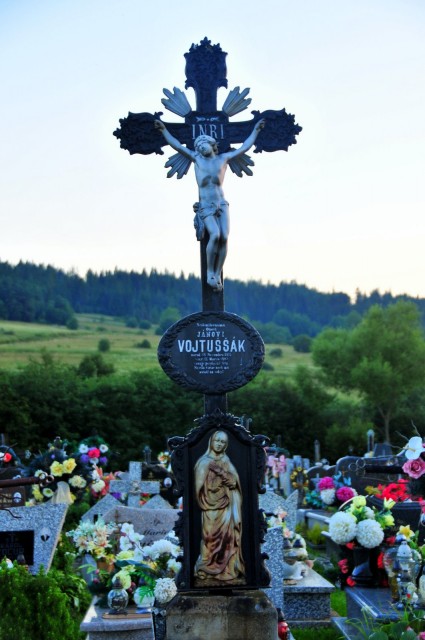
But I hadn’t come to see how much the cemetery had changed; I’d come to pay respects to three people, all of whom were taken entirely too soon.
Marcela finished up her freshman year in high school as I left Poland in 1999. I didn’t know her well: I only taught her class a couple of times a week, and I worked with her for only that one year. But when, back in the States, I learned that she and another girl, also my student, had drowned while on a trip to the Baltic Sea, that small connection seemed much more significant. A young girl, on a summer trip, drowns: it seems to be almost cruelly ironic.

Andrzej I knew much better, though. I taught him for three years, and when I returned to Poland in 2001, he’d graduated high school and we developed a friendly acquaintance as adults. Andrzej was truly popular with everyone. I don’t recall ever seeing him do anything other than smile. His death in a farming accident shocked and shook hundreds of people: his funeral mass was standing-room only, and for many weeks after, whenever I wandered into the cemetery, someone would be standing at his grave.
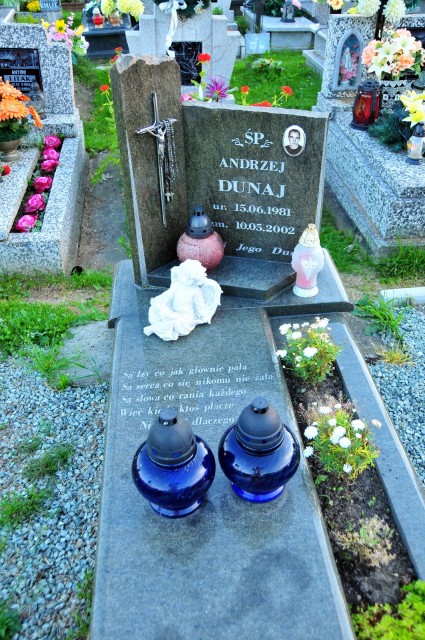
Emil Kowalczyk was Przewodniczący Rady Gminy (Chairman of the Municipal Council) for Lipnica Wielka, but more than that, he was a constant champion of the cultural heritage of Lipnica. I really only knew him in a professional capacity mainly by helping occasionally with some translation work. It was he, however, who arranged for me the traditional outfit required for admittance to the VIP seating area during Pope John Paul II’s visit in 1997. The mayor offered me the spot; Kowalczyk provided me the clothes. Always a kind and friendly soul, he died in 2005 of cancer at the young age of 64.
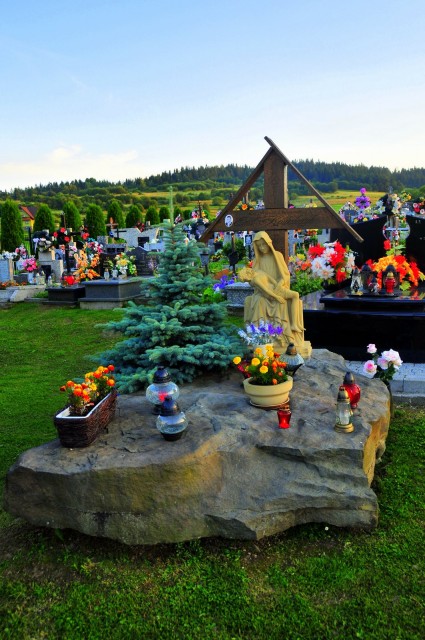
I visited the graves and felt a tinge of guilt that I didn’t bring flowers or a candle. I thought of the Jewish tradition of laying a rock on a grave as a mark of respect, but it seemed out of place, a Jewish tradition from a Catholic in a Catholic cemetery, as if I would just be going through some motions or other.
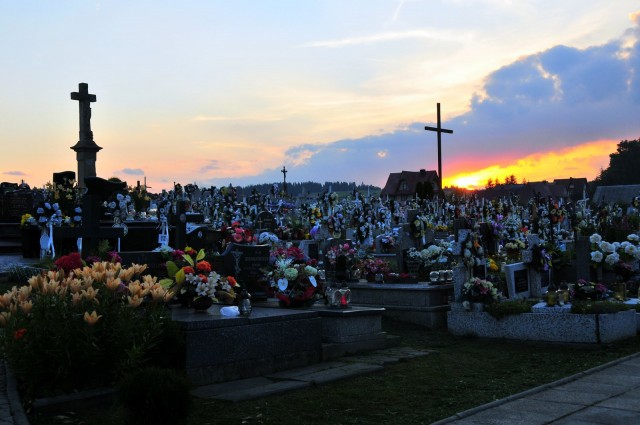
In the end, I just left after mumbling a short prayer over each grave, the same prayer L and I pray for Dziadek every night: “Have mercy on his soul and give him peace.”

On the way out, I noticed a fresly dug grave. Unlike in most US cemeteries, the graves in Lipnica are dug manually: a couple of guys with shovels, picks, and a few planks. Winter graves are hellishly difficult because of the depth of the frost line. Diggers must first thaw the earth before they can begin with the shoves and picks. In the summer, it must be relatively quick work.
First Autumnal Sunday
Outdoor living in South Carolina really only becomes comfortable around mid-September. Temperatures dip, the wind seems to blow more, and it feels less humid.
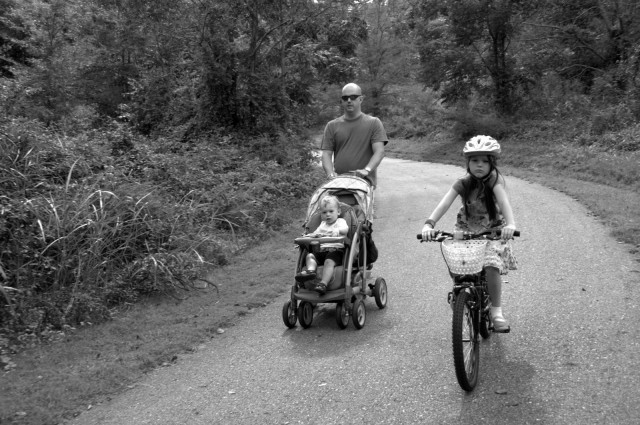
And so on a day like that — the first day like that — we decide we must take advantage of it. We head to our near-neighborhood favorite, less than five miles away. Lovely views, a flat paved path for the Girl to ride on: it’s a perfect place to pass a couple of Sunday hours.
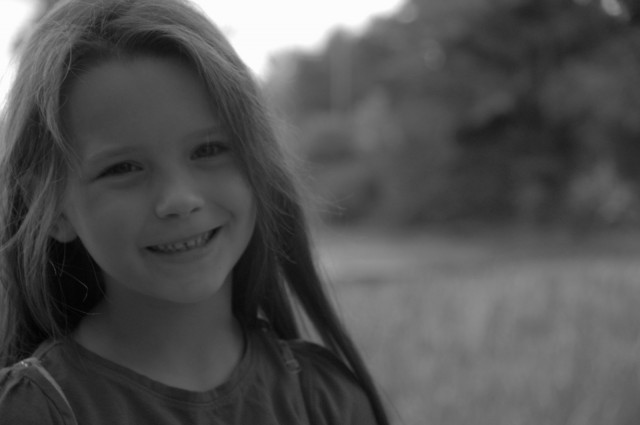
It’s a great place for L to practice on her new bike: hand brakes and gears make for a stressed, confused girl sometimes, and so a gentle, flat path is what she needs more than anything to grow accustomed to new techniques. She still tries to brake by pedaling backwards, and the overly-sensitive gears on the bike sometimes wreck havoc on her confidence, not to mention her pedaling.

Still, she manages.
As we walk, the Boy, who spends much of the time in the stroller, finally reaches a breaking point. He must get out and walk. But he doesn’t walk when he’s outside. Ever. He runs. And falls. And he has eternal scabs on both is knees to prove it.
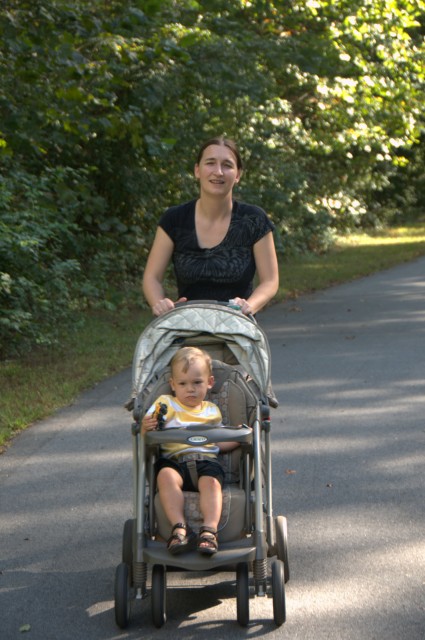
His teetering and tottering about add a new stress element for the Girl: she decides it’s safest to ride far in front. Until she realizes she’s far in front, then she stops and waits for us.
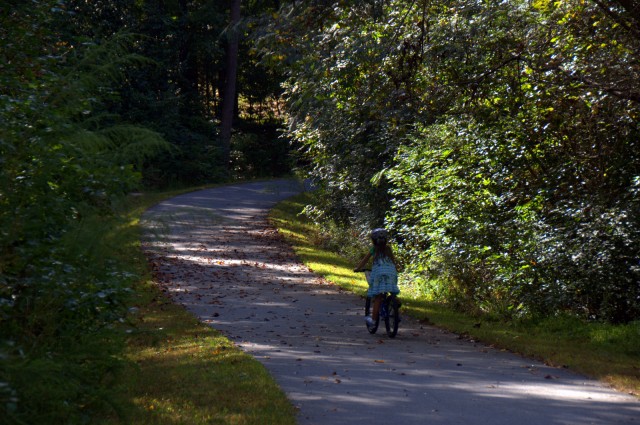
Those breaks, though, will come fewer and farther between as she grows older. She’ll soon be seven, and that’s so difficult to believe that I think I must be making that up.

255, 223, and 186
Though I am not a mathematician, physicist, or astronomer, and though I teach words, words, words, my professional life is an orbit of numbers. Some of the numbers are relatively innocuous: attendance, school picture orders, class periods. Yet every fall I get a series of numbers that guides instructional decisions for the next months and serves as the first half of what, to some degree, is largely regarded as a metric of my effectiveness as a teacher. In the spring, students trudge back into the computer lab as they did today to take the second MAP test, and I sit at my computer, entering the various scores, hoping that each student will score higher than she did in the fall.
The fall testing regime tells me what I have to work with. There are rarely any surprises: I can often guess within three or four points what a given student will make. By the time they’ve taken the test, the students have been in my class for a month, plenty of time to figure out their strengths and weaknesses. Add to it the fact that English and math classes are grouped by ability in our county and it’s a relatively easy exercise, this “Guess My Score.”
But there are always surprises. Today, for example, student after student in one class just seemed to be scoring higher and higher. Given the fact that an average MAP reading score for an eighth grader is 220, seeing student after student score above 240 is astounding. “It’s no wonder these kids are in English I Honors, effectively skipping eight-grade English and going straight to a ninth-grade, rigorous honors course,” I thought as I punched in the numbers. I knew they would be high, but this high? Unheard of. The highest fall class average I’ve ever encountered. And then one student finished with a score of 255, just four points lower than the highest spring score I’d ever seen!
It’s much more dramatic when one knows the grade level norms for the MAP reading test.
| Grade | Fall | Spring | Growth |
|---|---|---|---|
| 1 | 160 | 173 | 13 |
| 2 | 179 | 190 | 11 |
| 3 | 192 | 200 | 8 |
| 4 | 201 | 207 | 6 |
| 5 | 208 | 212 | 4 |
| 6 | 213 | 216 | 3 |
| 7 | 217 | 219 | 2 |
| 8 | 220 | 223 | 3 |
| 9 | 222 | 224 | 2 |
So the reading level of the student who scored a 255 is at least a college freshman, if not higher.
“What am I going to do with these kids?” I joked with a colleague. “They’re already scoring higher than they should at the end of ninth grade!”
“Make them your assistant teachers,” she replied.
Yet it’s not a serious problem: I just have to push them harder than usual. It would be a problem if they were mixed in with some students from other classes, because their reading level is significantly below grade level.
Later in the day, I had the opposite situation: student after student was scoring significantly below grade level. By significant, I mean a class average that, for the first twelve or thirteen students, didn’t rise above 197. Several students were scoring in the 180’s. Scroll back up and check the chart: that’s a second- or third-grade reading level. Though several students were absent from that class, I was still hopeful that by the time I entered the final scores, the average would rise above 200. But there were no scores high enough to pull the mean up, until the 223. The highest score in the class, and technically a score above average. The mean soared, rising to almost 201. I sighed in relief: it’s low, but having a sub-200 score seemed impossible. Unheard of. Then the next student finished: 186. The averaged dipped below 200 again, and stayed there until the end of testing, just two tenths of a point away from 200.
At the end of the day, I looked at the summary I’d created. Two classes drastically below average; two classes radically above. The lowest score put one student at a second-grade reading level; the highest score put another student at a college freshman or sophomore level.
“Thank goodness I don’t have them in the same class,” I thought. What could a teacher possibly do with students literally ten to twelve grade levels apart in reading? It’s essentially a return to the one-room school concept. Fortunately, I don’t have to figure out a way to solve that problem in my class, and the math teachers are equally fortunate. But social studies and science? There’s no leveling there, and so one’s class is likely to be an incredible mix of ability, motivation, and preparedness. I know there are ways to compensate for this (I have a Master’s in education, for heaven’s sake), but those techniques and tricks seem hardly up to such a challenge: they seem like they work only in theory. In practice, someone is always going to be bored, and thus someone is always going to be disruptive.
I wish I could end this with some sort of optimistic, pithy observation about the nature of education, about the malleability of the brain, about the strength of the human spirit, or some such cliche. I have answers I’ve found in books, but I don’t know how effective they are in dealing with such issues, especially when a significant portion of the challenge lies in challenging others to change their habits and behaviors.
It leaves me feeling pessimistic.
But I’ll get over it by Monday.
Work
“It’s a lot of work.”
We were standing outside my classroom, having what I hoped was a casual discussion about why this student had not turned in so much work. As if you can have a casual discussion about something like that. Still, the young man was casual enough in his response. Perhaps I should have made the conversation itself seem like more work. Having conversations that are both serious and friendly,
“It’s a lot of work.”
I didn’t like work at fourteen. I would have rather listened to Genesis. My best friend had introduced me to their early stuff — Trespass, Foxtrot, Selling England by the Pound, and The Lamb Lies Down on Broadway — and I was immediately captivated with how different it was from the pop nonsense they were producing at the time. Long, epic songs that developed into symphony-like layers, with motifs established and repeated later, variations of variations. Years later, my friend and I watched a documentary together about the band’s early years and I was struck by how much effort went into those songs. It was obvious from the listening, but to hear the band discuss it.
“It’s a lot of work.”
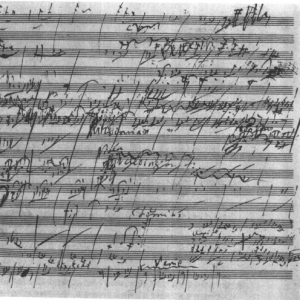 It would be tempting to say that early love of Genesis paved the way for my later love of classical music. After all, I had the patience to listen to long compositions. I was used to letting a piece of music develop over many minutes, not necessarily expecting a readily-determined formula. The truth is, though, it was probably the reverse. Whatever the case, both are virtually inaccessible to many of today’s fourteen-year-olds. I play classical often in class when students are working, and occasionally one will share a thought like this: “This music is boring. It just goes on and on and on.” I’ve wondered if it’s not a question of attention span. To someone who’s used to flashing videos that change every half-second, to hip-hop beats that are simplistic and unfold in a matter of seconds then repeat endlessly, it might be difficult to hold all the long themes and motifs in one’s head and wait to see what happens with them. Indeed, the motifs themselves might be so long that some kids can’t make the connection that it is one long theme. That kind of listening for that kind of listener is hard.
It would be tempting to say that early love of Genesis paved the way for my later love of classical music. After all, I had the patience to listen to long compositions. I was used to letting a piece of music develop over many minutes, not necessarily expecting a readily-determined formula. The truth is, though, it was probably the reverse. Whatever the case, both are virtually inaccessible to many of today’s fourteen-year-olds. I play classical often in class when students are working, and occasionally one will share a thought like this: “This music is boring. It just goes on and on and on.” I’ve wondered if it’s not a question of attention span. To someone who’s used to flashing videos that change every half-second, to hip-hop beats that are simplistic and unfold in a matter of seconds then repeat endlessly, it might be difficult to hold all the long themes and motifs in one’s head and wait to see what happens with them. Indeed, the motifs themselves might be so long that some kids can’t make the connection that it is one long theme. That kind of listening for that kind of listener is hard.
“It’s a lot of work.”
Some days, it’s tempting to say that today’s youth — I think I promised myself I would never use that term — are somehow more averse to work that I was as a kid, than my friends were, than anyone ways. It seems somehow connected to the technology of the times: kids are now used to instant everything, constant everything, boundless everything. “They don’t work!” seems to be a mantra in the middle school hallway. “Well, not most of them,” comes the quick amendment.
But they all can work, and they are all willing to work, and I have proof. I still don’t have the magic bullet, the answer to every teacher’s woes about apathetic, “lazy” students, but I have proof it can be overcome in all students.
Car Wash
September Day
It occurred to me that I never posted Saturday’s pictures.
There’s a story behind them — we can all see that. But I can only piece together bits of the morning side of things because I stayed at home with the Boy while K went with L for Saturday morning soccer.
Another tough loss, I hear when they come home. Not like last year’s start, which included four goals in the first two games.
No, this year they’re on the other end of it, getting whipped. And that’s good. In fact, I think as an educational experience, getting your tail kicked is more instructive than winning. Many more lessons to learn: humility, sportsmanship, graciousness.
Hang on — those are the exact same things you can learn from winning. Perhaps it’s just the sting that matters: we all have to get used to it sooner or later. I’d rather it be sooner for my children.
The Smile
I saw her walking down the hall and as I always do, I shot her a smile.
She seems to need it: there’s always apathy just at the edges of her eyes, sadness just at the corners of her mouth. When she smiles, her dark cheeks set off the whites of her wide eyes and glistening teeth. She is transformed.
“You need to smile more often,” I tell her. It’s not just honey and vinegar and all that. The ability to create a positive affect is a basic skill that everyone needs to master, and when one is as gifted with physical beauty as she is, something as simple as a pleasant smile puts everyone in the room at ease. She has that advantage, and she rarely uses it. In fact, most of her peers and teachers, I believe, think she’s ambivalent to the world, lazy at best, perpetually angry at worst.
Every time I smile at her, she smiles at me. That’s progress.
So I shot her the smile, and she smiled back.
“Who else do you smile at?” I asked.
“No one,” she replied, the smile disappearing.
Heartbreaking and heartening at the same time.
Loch Lomond
Apples 2013
We must crave rituals, for we invent them endlessly. We sleep on the same side of the bed nightly. When we participate in a class, we often end up sitting in the same seats throughout the course that we chose the first day. We go through periods of eating the same thing for breakfast.
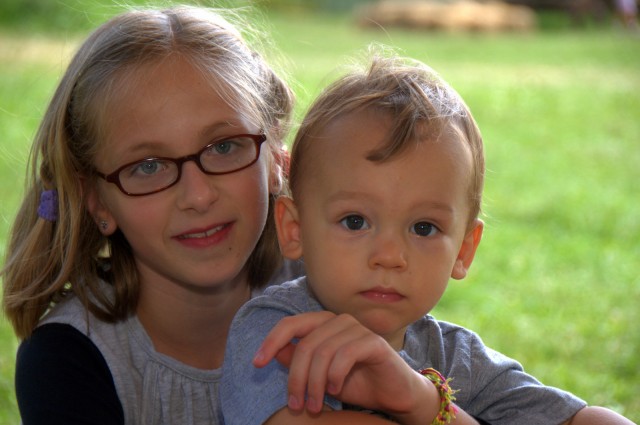
It’s easy to understand why: ritual makes life comfortable because it provides signposts for our lives. It adds predictability and stability, and early humans certainly lacked both of those, I would say.
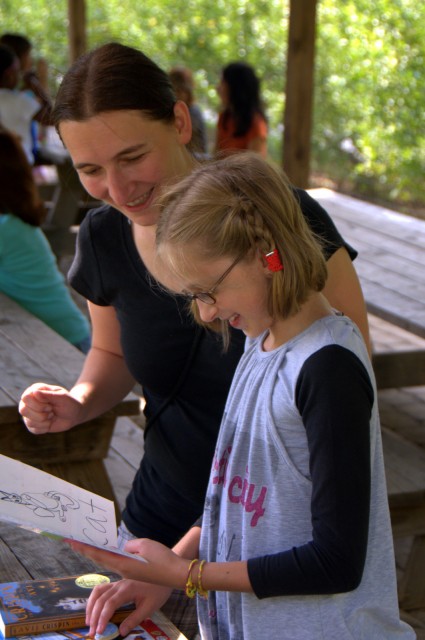
Some rituals are natural: it doesn’t take much thought to understand, for example, where birthday celebrations come from. Birthdays come around every year, whether we want them to or not, whether we’re aware of them or not.
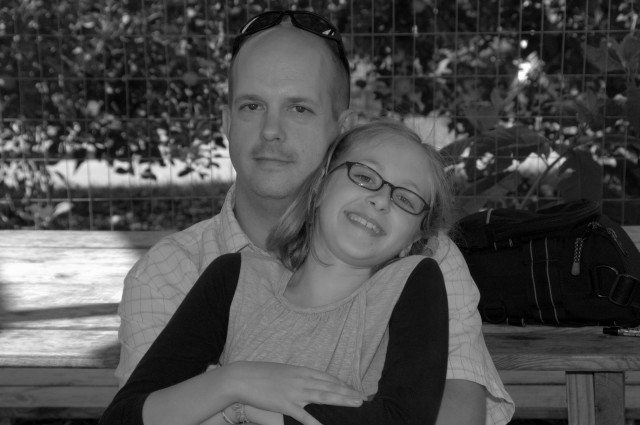
Other rituals, like cuddling up with a family friend who is in many ways more like simply family, come from the comfort they bring. Sweet conversations about school, the difficulty of speaking Polish, listening to your mother — these are things we repeat simply because they make soul glow just a bit brighter.
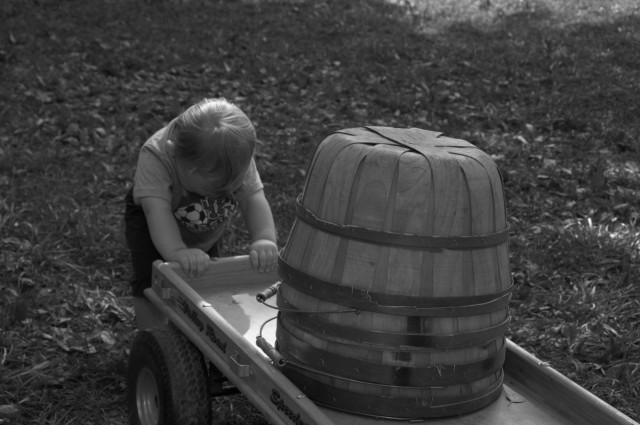
Some rituals are flexible, born out of obsession, such as an obsession with pushing, pulling, tugging, conjoling, and wrestling anything and everything that’s bigger than you are.
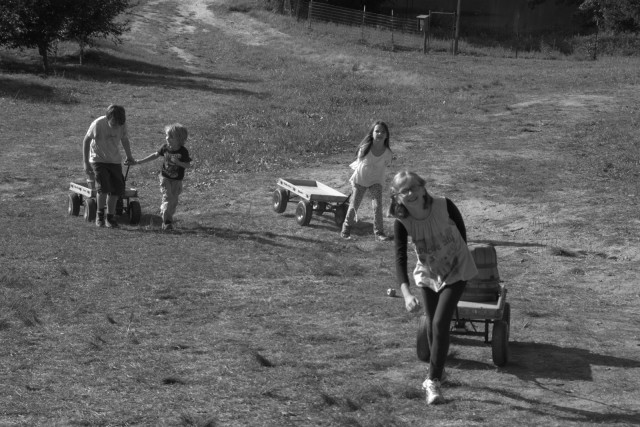
Still other rituals receive their form from the calendar: seasonal rituals are beyond the control of even the most OCD toddler or desparate-for-an-outing parents. Apples cannot be hurried, and we cannot make an autumnal ritual repeat in December just because.

We pick up most of these rituals by watching others do them. All the parishioners at our church genuflect and make the sign of the cross before entering the row of pews. It’s not something I’d ever seen in Poland, and K has never really done it. As such, I’ve never really done it. L took it upon herself to do so this morning at Mass. Perhaps she’s creating her own personal ritual by watching others’ traditions.
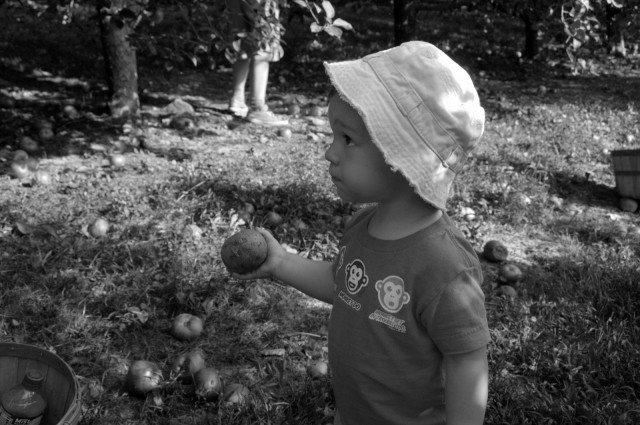
The Boy is keen on such watch-and-learn rituals. He knocks on closed doors when he sees them, and every time he passes something that’s off limits, he reminds himself and others with a shake of the finger and the Polish equivalent of “no-no.”

And rituals often themselves contain sub-rituals. A visit to the orchard, which often includes the usual suspects, always concludes with a group portrait — or a semi-group portrait, because someone has to take the picture.
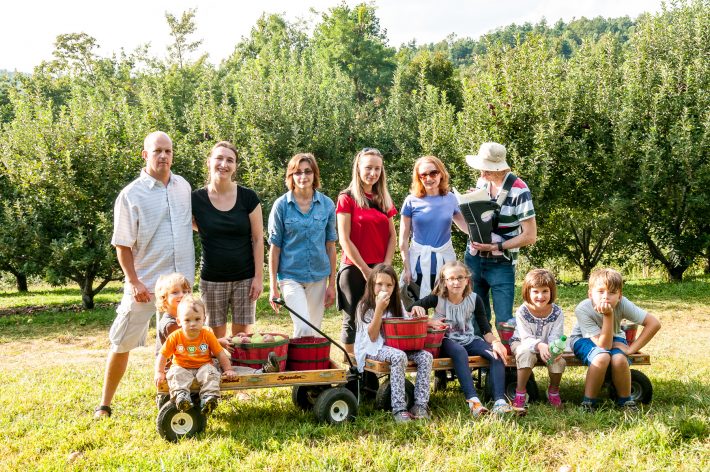
Just like someone has to push the cart.
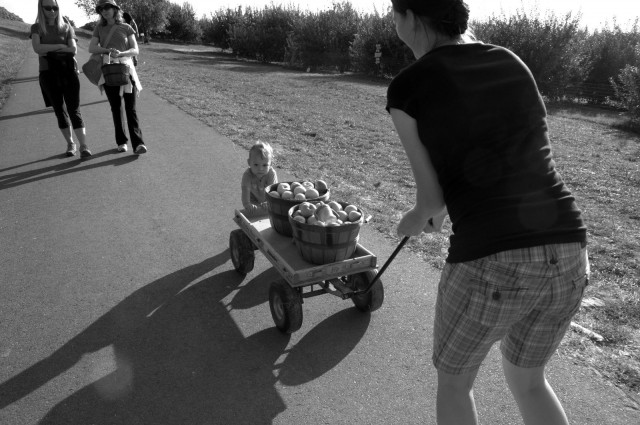
It’s ritual. It’s habit. It’s life.

